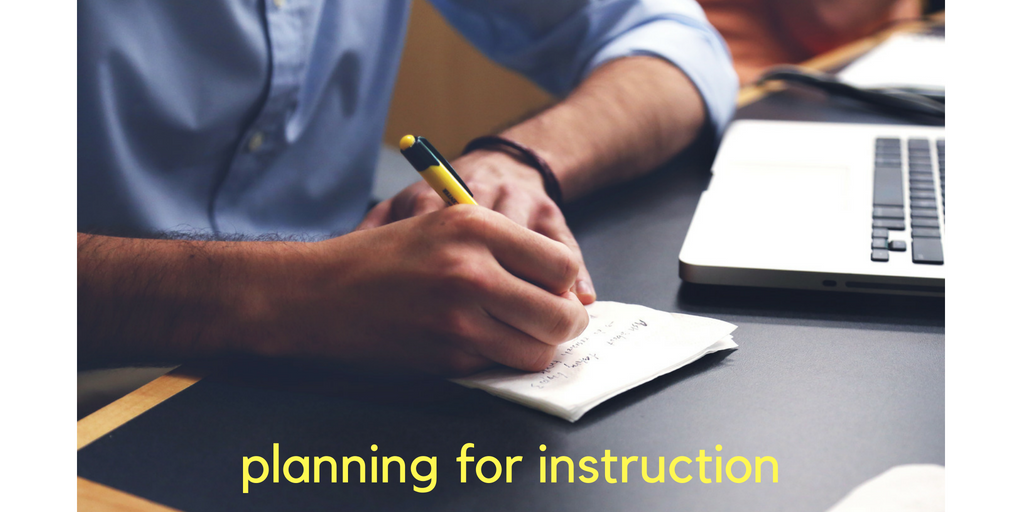
Many school systems have very regimented curricula. I have a teacher friend who literally opens up a binder, turns to whatever day it is, and that day’s lesson’s objectives, procedures, materials, and assessments are all there for him. It’s more like an actor reading a script. Then there are those teachers who work in independent, charter, or less rigid school systems that have a looser grip on what teachers are supposed to teach. I imagine there are several shades of rigidity and laxness in between.
When I started my last job, I kept pestering my principal for the curricula for the courses I was going to teach. After all, I was teaching two languages to the entire elementary school, spanning some seven grade levels. It was a little intimidating! After she sheepishly handed over seven sheets of paper, I realized why she was so reluctant to do so; the “curricula” was a mere list of vocabulary words that were taught to each of those seven grade levels.
At that point, I was even more stressed out because I had a huge job ahead of me. Furthermore, without having had the chance to meet these kids, I was completely unaware if they knew these umpteen words on the page, or better yet, if they even knew how to use them.
After an initial full panic mode, I eventually rationalized with myself: “I’m just going to take it month by month and see where things go.” Sure, I had to make a general plan, but I had to stay flexible. I wasn’t sure what proficiency level each grade level was going to be at.
Flash forward fifteen years. I’ve been at my current school for five years. My Spanish teacher colleague in the primary school and I have decided that it’s time to fully align our curriculum. Over the years, we’ve done this task for Pre-K through grade 2. This summer we received a grant to write curriculum for grades 3-5.
Here are my suggestions on how to start your adventures in curriculum development:
• Network. If you know the teachers who teach below your grade levels or above them, check with them. See where your cohort is coming from and where they’re going to. If you’re teaching a beginning level course, then this step has been simplified for you!
• UbD. I embraced Saint Wiggins and worked out a backward plan. I established what goals I wanted students to meet at each grade levels I was teaching.
• Interests. I chose topics that resonated with each grade level. Farm animals might appeal to Pre-Kindergarteners, but my fifth graders would need something a little cooler, like superheroes or fashion. Once you’ve got the kids in your classes, you can poll them as to what they would like, or what interests them. You should probably plan out your first unit in advance until you’ve secured enough data to customize the course to their interests.
• Stuff. What materials do you have at your disposal? Do you have textbooks? Do you have readers/novels? Dos your school have a decent library? Does your department have materials to share with you? Or will you have to make everything yourself?
• Feel free to seek inspiration. Use your Google abilities to see what teachers are doing elsewhere. There’s no sense in reinventing the wheel. It is nice, however, to tailor another person’s wheel to fit your car. One size doesn’t always fit all. Check with your state’s department of education. Do they provide a syllabus? Teaching and learning standards? Use these as guidance as you’re plotting out a curriculum.
• What works? As I developed my thematic units, I needed to take into account what is developmentally appropriate for each level that I’m teaching. Do you really need to hold a first accountable for spelling in a second language? Another thing I initially had to keep reminding myself: at grade level A, I want topic X to be an introduction, but at grade level B, I want topic X to be for mastery.
As you’re crafting your curricula, let it sit for a day or two. Come back with fresh eyes and see if you’re still in agreement with the choices you’ve made. Don’t feel intimidated to make changes – or to spiral topics/vocabulary that feel worthy of repeating or expanding. Take notes – was a particular component particularly successful?
Writing a curriculum is by no means easy – nor will you ever feel satisfied with it as being finished. After my years at my school, I am still changing something every summer and having to work through these steps. Good luck!
 I was just talking with a colleague the other day about planning time – and I expressed how grateful I am for the time we get during the school day to do our planning. After all, good instruction can’t happen without good planning.
I was just talking with a colleague the other day about planning time – and I expressed how grateful I am for the time we get during the school day to do our planning. After all, good instruction can’t happen without good planning.
